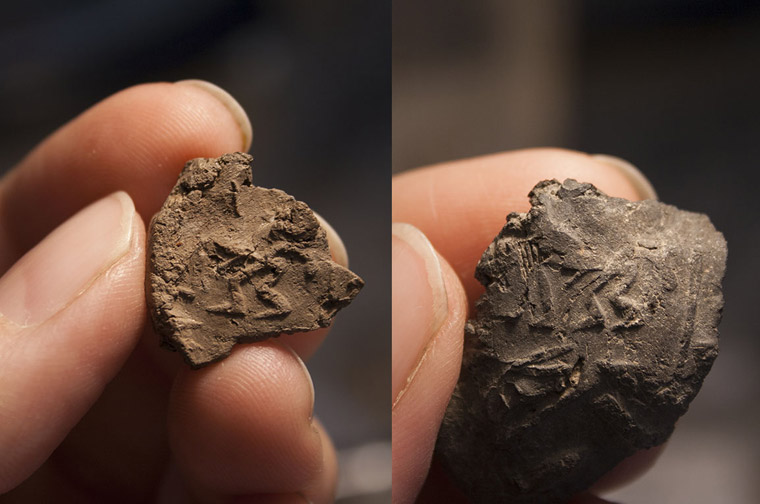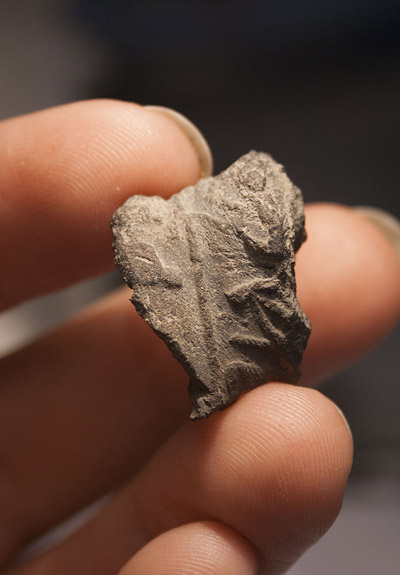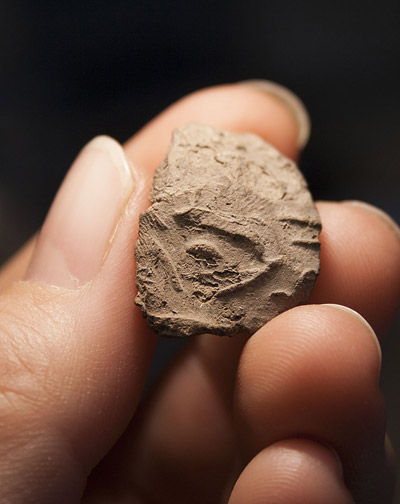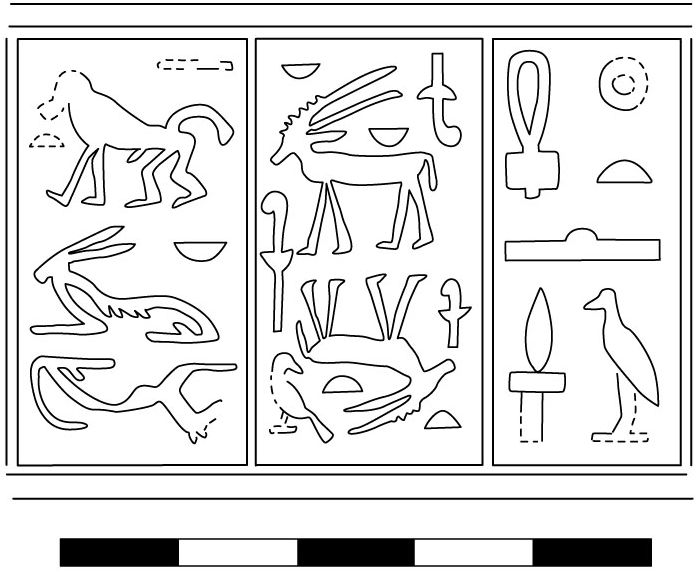*This is the fourth installment of a series by AERA Sealings Team Member and Managing Editor Ali Witsell. Read part one, part two, part three and John Nolan’s introductory sealings blog from the beginning of the season, for a refresher course on sealing terminology.
The real story of the informal sealings at Giza was brought to light with re-excavations in an area called AA a few years ago. What the Pottery Mound corpus was to defining “formality” at Giza, I think Area AA will be to our finally defining “informality.” Area AA lies in the Western Town of HeG and is composed of three structures that seem – based on the formals that we reconstructed from that area – to have been related to the administration and potentially the provisioning of a group of priests working for the Royal Funerary Workshop (or the wabet), largely dating to Menkaure’s time. (John has an article on these priests slated for publication in the next issue of AERA’s newsletter, AERAGRAM 15.1. Keep your eyes peeled!)
But mixed in with these formal priestly sealings were informals in a number that we had not really encountered in any other area of the site. And not only were they numerous, they were duplicates, and by piecing them all together I came up with a snazzy informal theoretical of my very own.
You have to understand that piecing together a theoretical seal from sealings alone is a lot like working a puzzle without the picture on the front of the box. When we go through them at the beginning of a season, we turn them round and round and upside down, tilting them forward and back under a strong raking light until something clicks and makes sense. A lot depends on the quality of the clay and the impression. We often play the “looks like a” game.

Does the sealing on the left show the lower half of a man mid-roll in a round of bowling? No, sadly (although that would be fun). The sealing on the right gave a bit more of the image, proving that the “bowling ball” was really the curvy tail of a proud baboon.

Can you see the profile of a rabbit’s head, foot, and paw on the right side of the vertical dividing line? This one may be a bit tricky, but trust me, it’s there. An impression with a dividing line can be crucial because it helps me order the panels of motifs. If the forms on one side of the line are a duplicate to forms I know from another impression, I can begin to build the overall structure. In this case, this sealing helped me know that I had finally collected them all.

Which way is up? It depends on if you see the horned caprid or the bird. This impression is important because it provides me with the lower edge of the seal – the straight line along the bottom of the sealing – giving me the lower limit of the composition. The blurry signs by my index and middle finger belong to a second impression, a different roll of the seal. The sealer turned his seal upside down and made another pass. Actually, a few of the sealings that go into this reconstruction are sealed exactly the same way, an idiosyncrasy of the way this seal owner liked to seal his packages.
So we twist them round and round in just the right light, draw snippet upon snippet, slowly piecing them together, until we have no more pieces of the whole available to us. And if we’re lucky, voila!

After compiling the impressions on 34 sealings from Area AA, this is my current working reconstruction of the seal we call “Theoretical B”- a nearly complete seal with a panel of hieroglyphs indicating that this seal was a khetem wedja. Great! So what’s a khetem wedja? John translates it as “seal of the storehouse” and thinks that this class of seals (there are a few known examples from other sites and a Kaplony example or two as well) might represent a different sphere of bureaucratic organization in the Old Kingdom. The strings of titles on some of the Official seals we have reconstructed seem to be almost an accounting of the jobs that a specific person held – the seal owner’s resume carved in miniature, if you will – and that makes us think they are very individualistic. A khetem wedja may lie at the other end of the spectrum, being a seal that belonged more to an institution than a single person. And to us, that’s a very exciting bridge to build between the informal sealings and the economy and physical reality of the HeG site.
And what’s even better news? From the one-off informals site-wide, I believe we have at least another 24 theoretical khetem wedja seals in the mix.
But we’re going to need some more trash heaps to get to the bottom of those.
Peas in a Pod
It was relatively common in the 19th and even early 20th centuries for archaeological excavations in the ancient world to focus more on sites with known Biblical or royal connections, because in the minds of many early archaeologists those sites stood a greater likelihood of producing museum-quality artifacts – more gold, statuary, reliefs, and the like. As the saying goes, history is written by the victors, so it makes sense then, no?
The problem with this approach in archaeology is that the results can give skewed interpretations of past reality. It downplays the importance of entire spheres of ancient populations that were active players in the economies of their societies, but for one reason or another, their stories just aren’t as clear to us now. The sealings can be viewed in much the same way. Sure the formals are royal and bright and loud, demanding our attention for clear reasons, but we can miss important parts of the puzzle if we don’t look around to see what was found next to them.
Formals and informals are two peas in a clay pod. Although we’re just beginning to truly understand the reasons for these distinctions, we know enough to say that you need both sides to tell the full story of the sealings at Giza.
Although we’ve pretty much got the front sorted on this khetem wedja, just wait ’til you hear what its back impressions and findspots have to tell us!
But my departure date looms and I still have a mound of data entry to do.
I think that’ll have to be a story for another season.
